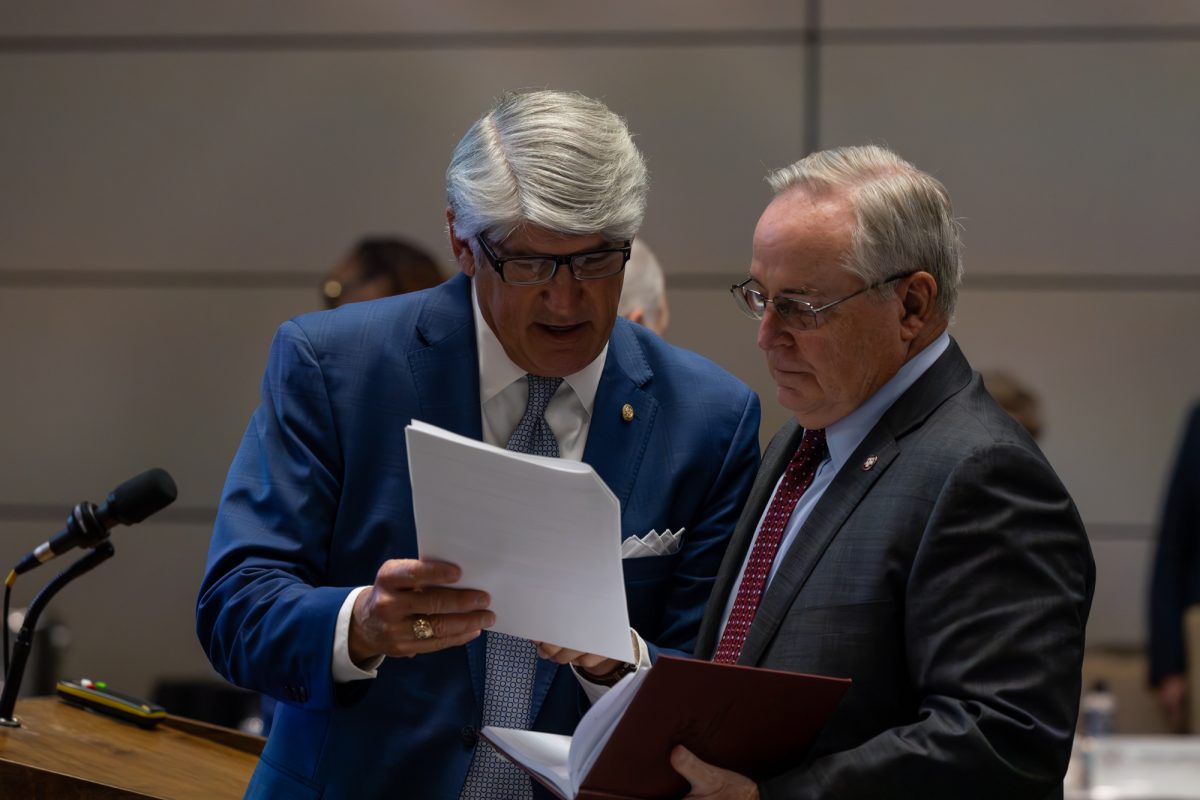Texas took another step toward the stars earlier this month when University of Texas System Regents met on March 7 to approve a $50 million commitment to funding the world’s largest telescope, a project in which Texas A&M has a stake.
The Giant Magellan Telescope Project is a collaboration between nine international partners to build an observatory in Chile capable of producing images 10 times sharper than the Hubble Space telescope. UT and A&M are individual partners in the effort, and UT’s recent monetary pledge is the latest development in a race to start construction before the year is out.
David Lambert, director of UT’s McDonald Observatory and astronomy professor, said the $50 million pledge constitutes half of UT’s planned commitment.
“It’s a five percent contribution to the construction costs and it brings the project closer to being able to make a decision on construction,” Lambert said.
UT’s pledge will come from research reserves held by UT Austin. Lambert said UT is currently working on raising another $50 million from multiple private sources in order to fulfill UT’s commitment of funding 10 percent of the total telescope, which is estimated to cost $1.05 billion. Texas A&M has raised $25 million to date with an additional $5 million contribution from the College Station campus almost finalized.
Lambert said the funding commitment began last fall when UT Austin submitted a proposal to the UT System on possible financial contributions to the GMT, and credits this month’s pledge to the backing of UT Austin President Bill Powers and Linda Hicke, dean of UT’s College of Natural Sciences.
“The key thing is getting your dean involved, and then the provost and then the president,” Lambert said.
Gary Susswein, director of media relations at UT, said Powers and UT Austin made the $50 million commitment because they view the GMT as a way to ensure that UT continues to offer a world-class astronomy program.
“The main factor here was UT having the ability to do world-changing scientific research,” Susswein said. “By being involved in the GMT and having some days when we are able to do research there, it allows us to further our scientific research and our work in astronomy and to continue to be an international leader in that field.”
H. Joseph Newton, dean of Texas A&M’s College of Science, said A&M is seeking financial donations from a variety of sources to fulfill its five percent, or $50 million, financial commitment toward the telescope.
“I’m hoping [UT’s contribution] will help,” Newton said. “A&M and UT are kind of competitive with each other, so maybe this will help us with donors to catch up with them.”
The majority of Texas A&M’s commitment thus far has come from the late George P. Mitchell, who donated close to $25 million to Texas A&M for GMT funding before he died last year. Newton said closing the gap between raised capital and the five percent target would boost A&M’s astronomy program to new heights.
“There’s a real advantage to getting to $50 million,” Newton said. “That gives us a five percent share of the use of the telescope and that would be a significant accomplishment for our astronomy program.”
Texas A&M and UT seek to pay five and 10 percent, respectively, of the GMT’s total cost because such a commitment will result in exclusive viewing rights for each institution’s science programs. However, as designs are finalized and staff is hired in anticipation for future construction, the nine GMT partners have about a year to deliver the required funding before further delays become costly.
The momentum may be increasing in the GMT’s favor, however.
Michael Long, vice president of the GMTO Corporation, said as more development milestones are passed, the telescope becomes more attractive to potential partners and donors.
“During the last 10 to 12 months there’s been a steady increase in inquiries as to whether we’re interested in getting a partner, and a lot of that has to do with the momentum,” Long said. “Other institutions around the world see the progress that has been made and passing the design review is a good example of a major step, and we get more inquiries.”
Long said more than 75 percent of the funding has been reached to begin stage one construction, and that the only two major steps that remain to be taken before breaking ground are the approval of a construction proposal and the securement of remaining monetary commitments.
UT funds advance telescope project
March 17, 2014

0
Donate to The Battalion
$2065
$5000
Contributed
Our Goal
Your donation will support the student journalists of Texas A&M University - College Station. Your contribution will allow us to purchase equipment and cover our annual website hosting costs, in addition to paying freelance staffers for their work, travel costs for coverage and more!
More to Discover









